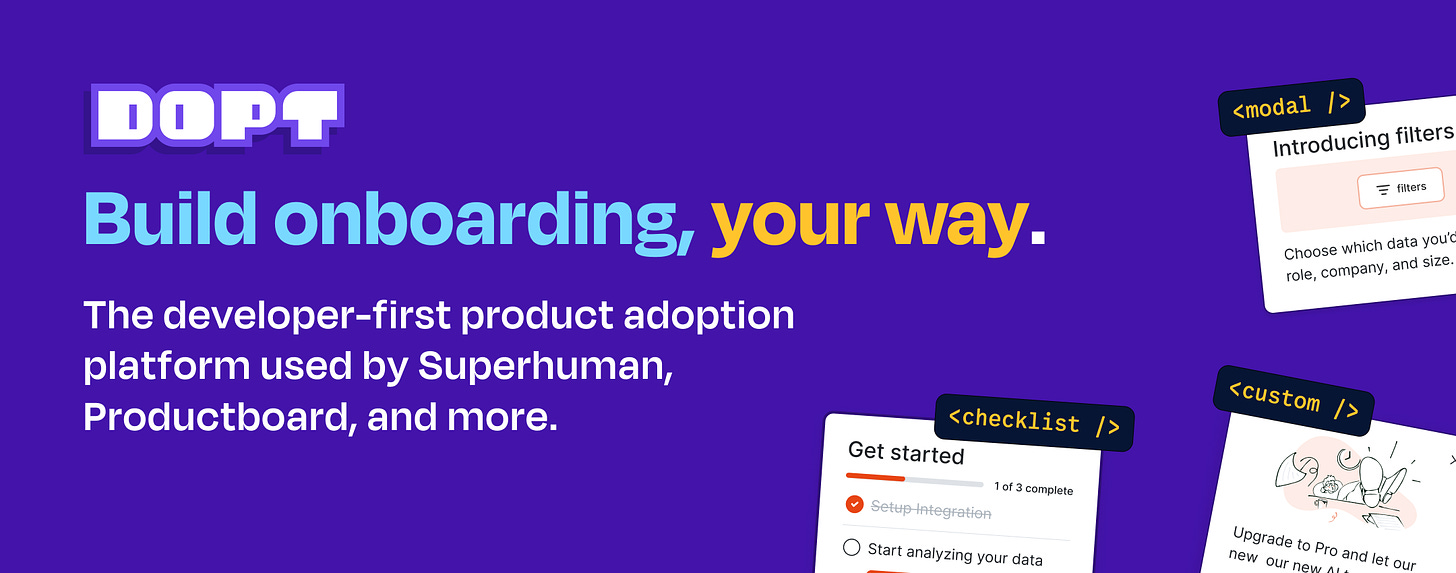Profiling: The onboarding step that transforms your growth efforts
No, adding profiling questions will not “ruin your onboarding CR.”
This post is sponsored by Dopt: Dopt gives developers a component library and SDKs to build seamless product onboarding and education experiences in minutes.
Keep reading with a 7-day free trial
Subscribe to Elena's Growth Scoop to keep reading this post and get 7 days of free access to the full post archives.




